









Buying











Buying
recientemente una serie original de Netflix en ADN sintético. Y más recientemente, los investigadores del Instituto de Tecnología de Georgia, en colaboración con nuestro equipo, descubrieron una forma de aumentar la eficiencia de los métodos actuales de almacenamiento de datos de ADN en un factor de 100.

También

El
Contributor Board Tom Wills, Chair
Cathy Jennings, Christine Doeg, Demetria Kalodimos, Kerry Graham, Amber DuVentre, Jerome Moore, Drew Morris, Andy Shapiro
Linda Bailey • Amanda Haggard • Ridley Wills II • Judith Tackett • Yuri Cunza
• Roonie Gooman • Paul Boden • Art
Hazelwood • Wendell J. • Emily Leproust
• Jen A. • William B. • Mr. Mysterio • Norma B. • Daniel H. • Joe Nolan
Contributor Volunteers
Las
A diferencia de los servidores en los centros de datos, los métodos de almacenamiento basados en ADN son ecológicos. Una vez que la información se convierte en ADN, no consume energía. Esos datos también duran mucho más; mientras que los discos duros magnéticos convencionales se desgastan y necesitan ser reemplazados cada década, los datos que han sido codificados en el ADN teóricamente podrían durar más de 500,000 años. Nuestra civilización está produciendo más datos que nunca. Sin nuevos enfoques, el almacenamiento de datos amenaza con empeorar las crisis ambientales y generar otras nuevas. Y con cientos de millones de nuevos usuarios de Internet agregados cada año, la urgencia no podría ser mayor. Los enfoques como el almacenamiento basado en el ADN pueden ayudar a aprovechar todo el potencial y la promesa de la era de la información sin sacrificar la salud del planeta. Emily Leproust es directora ejecutiva y cofundadora de Twist Bioscience. Envíenos

La
The International Network of Stree Papers outlines the history of social disinvestment in the country since the '80s.

Contributor vendors write in this issue about James Baldwin, local musicians, how far they've come, and Southwest Airlines.
The Pale Blue Eye sees Harry Melling darkly shining as Edgar Allan Poe. Watch this spooky movie streaming now on Netflix.
The Contributor is a nonprofit social enterprise that creates economic opportunity with dignity by investing in the lives of people experiencing homelessness and poverty.
Starting in 2019, our C.O.V.E.R. Program (Creating Opportunity for Vendor Employment, Engagement, and Resources) was the natural expansion of our mission of removing obstacles to housing. We now offer full case management, assistance with housing and rental expenses, addiction recovery, health insurance, food benefits, and SSI/SSDI assistance. We see the onestop-shop team approach radically transforming a vendor's image of self and their place in community.
Since we started in 2007, more than 3,200 different vendors have purchased $2.3 million worth of The Contributor and sold over six million copies, generating over $15 million in income for themselves.
Take the paper, change a life. Read the paper, change yours.
Christine Doeg , Volunteer Coordinator Joe First • Andy Shapiro • Michael Reilly • Ann Bourland • Laura Birdsall • Marissa Young • Matthew Murrow • Gisselly Mazariegos • Tyler Samuel • IJ Quinn • Linda Eisele • Jamie Dore • Russ Heldman
Cathy Jennings Executive Director
Tom Wills
Director of Vendor Operations

Carli Tharp SNAP Specialist
Ree Cheers SOAR Manager
Rachel Ternes Housing Navigator

Amy Holt Housing Navigator
Mary Margaret Weatherford Housing Navigator

Jesse Call Operations Consultant
Raven Nye Director of Housing Initiatives
Justin Wagner Resource Coordinator & Reporter Barbara Womack Advertising Manager
Amanda Haggard & Linda Bailey Co-Editors
Andrew Krinks Editor Emeritus
Will Connelly, Tasha F. Lemley, Steven Samra, and Tom Wills Contributor Co-Founders
Editorials and features in The Contributor are the perspectives of the authors. Submissions of news, opinion, fiction, art and poetry are welcomed.



The Contributor reserves the right to edit any submissions. The Contributor cannot and will not endorse any political candidate. Submissions may be emailed to: editorial@thecontributor.org
Requests to volunteer, donate, or purchase subscriptions can be emailed to: info@thecontributor.org
Please email advertising requests to: advertising@thecontributor.org


The Contributor P.O. Box 332023, Nashville, TN 37203 Vendor Office: 615.829.6829

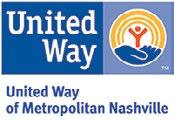
Printed at:
Whether you’ve lived in Nashville for years or you’re just in town for a few days, there’s always a way to get out and about without spending a ton. Every two weeks, The Contributor rounds up some of the best local fun to help you navigate all the city has to offer as well as volunteer opportunities and the occasional quick hot tips for the tourists from a vendor.
Jan. 18-20 | 11 a.m., 1 p.m., 2 p.m. and 3 p.m. at the Tennessee State Museum, 1000 Rosa L. Parks Blvd.
In the days leading up to the second inauguration of Gov. Bill Lee, the Tennessee State Museum is offering inauguration highlight tours to mark the occasion. Tours are free, but are first come, first served.

NOVEL CONVERSATIONS ON FILM: A BEAUTIFUL MIND (2001)

Jan. 19 | 5 p.m. at the Bellevue Branch of the Nashville Public Library, 720 Baugh Road
At the Bellevue Branch of the Nashville Public Library, the Novel Conversations on Film book club is meeting to screen A Beautiful Mind on Jan. 19. Community members are welcome to join the screening whether they’ve read the book or participated in the book club or not. In February, the club plans to show Something Wicked This Way Comes
THE DOLLY DISCO: THE DOLLY PARTON-INSPIRED COUNTRY WESTERN DISCO DANCE PARTY

Jan. 20 | 9 p.m. at Brooklyn Bowl, 925 3rd Ave. N.
This one isn’t entirely free, but it isn’t as pricey as going to most places in town for an evening. Brooklyn Bowl is hosting a Dolly Parton-inspired dance party for the patron saint of the state of Tennessee. Tunes will include an array of artists on the theme: Tina Turner, Carrie Underwood, Reba McEntire, The Chicks, Loretta Lynn, Shania Twain, Whitney Houston, Kacey Musgraves, Donna Summer and more..
Jan. 29 | 7 p.m. at the Assembly Food Hall, 5055 Broadway
If you’re already going to be downtown on Jan. 29, Assembly Food Hall has a great place to swing in and cheer on the Predators play the LA Kings. The event is free, but there will be special Predatorsthemed drinks on sale.

BOOKS AND BREWS: NASHVILLE READS: I KNOW WHY THE CAGED BIRD SINGS BY MAYA ANGELOU

Jan. 28 | 11 a.m. The Black Abbey Brewing Company, 2952 Sidco Drive
Books & Brews hosts a monthly book club at Black Abbey Brewery to discuss a variety of authors and genres over a drink or two. As part of the Nashville Public Library’s Nashville Reads Banned Books event, the group will this month discuss I Know Why the Caged Bird Sings by Maya Angelou.
Nashville is getting ready for its annual Point In Time (PIT) count on Jan. 26. During that night, it is the goal that every person experiencing literal homelessness will be counted and surveyed to collect data that in spring will be submitted to the U.S. Department of Housing and Urban Development (HUD). In addition to the PIT data, Nashville’s Continuum of Care (CoC) will also submit data on a point-in-time inventory of beds dedicated to serve people experiencing homelessness within our county, which is called the Housing Inventory Count (HIC).
Those two data sets are collected from close to 400 CoCs across the country and accumulated into a report called the Annual Homeless Assessment Report (AHAR), which is submitted in two parts to Congress to provide detailed demographics and information about the national state of homelessness.
HUD released its AHAR Part 1 report in December 2022 around the same time the new federal plan to prevent and end homelessness was published. AHAR Part 1 is a 95-page document that is based on the PIT and HIC data. It provides snapshot information. AHAR Part 2, which has not been released yet, provides Congress with annualized data on literal homelessness based on data collected in the Homeless Management Information System (HMIS).
The information outlined here from AHAR Part 1 only provides a snapshot of homelessness and does not include people using motels as their long-term housing, staying doubled up meaning they live with families or friends due to economic hardship, or couch-surfing.
During COVID, tremendous federal investments occurred to help people remain in housing. These dollars benefitted the homelessness sector, which is largely reflected in the 2022 AHAR Part 1. Against all initial fears, we have not seen the big jumps in homelessness due to COVID that we all were afraid off. But the report nonetheless shows significant shifts in trends. While overall homelessness only slightly increased between 2020 and 2022 (there was not sufficient data collected for 2021), unsheltered and chronic populations increased.
One significant data point that jumped out at me was that with an increase of 3,311 people, Tennessee is listed as the state with the third largest absolute increase in homelessness be -
tween 2020 and 2022. Nashville, however, was not the cause of that. Rather, Chattanooga jumped from a PIT count of 648 in 2020 to 3,392. Memphis saw an increase of 33 people; Knoxville had an increase of 433 people; and Jackson counted 45 more people. The remaining increases occurred in rural Tennessee counties.
As you can see, this is where regular one-night snapshots can benefit communities, which then can go back and look at these trends over time. Is homelessness increasing slowly, rapidly, or staying pretty much the same? What are the causes at the local level and how can we turn the tide around?
For a long time, it was misunderstood that the more people we count during that one January night, the more dollars we will get. Let me reiterate that this is wrong information. Local CoCs receive extra points on the annual national competition for federal homelessness grants in their participation in collecting and submitting the PIT and HIC data. And Congress and local policy makers can and should use this data to evaluate the state of homelessness at a larger scale. Admittedly, ideally any significant increases in the number of folks experiencing homelessness may impact the level of overall federal funding that Congress decides to allocate to HUD, which then in turn has more funds to provide in the CoC grant competition. However, multiple other factors will persuade Congress to invest in more funding outside of this report. So far, it clearly has not worked to the level that we need it to end homelessness successfully.
What I have barely touched on so far is the Housing Inventory Count also known as the HIC. It will warrant another column to dig a little deeper into those local data points. But what it collects is the type of temporary beds and permanent housing units in each community that are designated for people experiencing homelessness. Overall, as you can imagine, the HIC data clearly shows that nationwide communities do not have enough housing inventory to meet the need. This is also the case in Nashville.
The U.S. Interagency Council on Homelessness (USICH) in its new strategic plan places, among other things, an emphasis on the importance of using data to plan and evaluate the effectiveness of our local systems. But the federal government has also been clear that there is a combination of data sets needed to get a true picture
Annual Homeless Assessment Report (AHAR): An annual report to Congress on the extent and nature of homelessness nationwide. It provides federal and local policy makers with a deeper understanding of how homelessness changes over time.
Continuum of Care (CoC): A group of community stakeholders within a geographically defined area to carry out the responsibilities required by the federal government to build a response to prevent and end homelessness. This group is composed of representatives of organizations, including nonprofit homeless providers, victim service providers, faith-based organizations, governments, businesses, advocates, public housing agencies, school districts, social service providers, mental health agencies, hospitals, universities, affordable housing developers, law enforcement, organizations that serve homeless and formerly homeless veterans, and homeless and formerly homeless persons to the extent these groups are represented within the geographic area and are available to participate. The U.S. Department of Housing and Urban Development (HUD) also provides a competitive grant to support the work at the local level.
Homeless Management Information Systems (HMIS): An information system designated by the Continuum of Care to comply with the HMIS requirements prescribed by HUD.
Housing Inventory Count (HIC): A point-in-time inventory of emergency and transitional beds as well as permanent housing units dedicated within a Continuum of Care to serve people who experience homelessness.
Point In Time (PIT) Count: a count of sheltered and unsheltered people experiencing homelessness on a single night during the last 10 days in January. HUD requires that CoCs conduct a biennial count of people experiencing unsheltered homelessness and sheltered homelessness, including those who are sheltered in emergency shelter, transitional housing, and Safe Havens.
of homelessness.
For one, there are two federal definitions of homelessness. The “literal homelessness” definition provides the information for the PIT and HIC data in the AHAR Part 1 Report as well as the HMIS data that provides an annualized picture of homelessness for AHAR Part 2.
The second definition is used by the Department of Education and the
Department of Health and Human Services. This definition includes the literal homelessness population and adds all those households that are living in motels, are doubled up, and couch surfing.
In essence, data is great to have. What we need to learn now is how to best use it and translate it into policy changes that help drive homelessness numbers down.

Automobiles began carrying mail in Tennessee in 1910, when an automobile began running the mail route from Nashville to Chapel Hill in Marshall County via Nolensville, Triune and other stops.Two years later, automobiles replaced mail hacks from Murfreesboro to Woodbury. In 1913, automobiles replaced mail hacks from Cookeville to Sparta and, in 1917, automobiles began carrying mail from Pulaski to Cornersville.
What were mail hacks? Mail hacks were horse or mule-drawn vehicles either an enclosed carriage, a buggy, or a vehicle specifically built to carry mail, according to the Sequachee Valley Electric Cooperative's Tennessee Magazine

These vehicles moved through the countryside at five or six miles per hour, stopping about every two hours to change horses or mules. Passengers could ride mail hacks for a fee. In 1858, it cost $2 to ride in a mail hack from Fayetteville to Shelbyville. In 1888, it cost 50 cents to ride in the mail hack between Clarksville and Mount Carmel in Montgomery County. Of course, there were accidents. In 1906, horses leading a mail hack in Stewart County became frightened and started running. The driver fell out of the hack, leaving two female passengers to fend for themselves. The horses didn’t slow down for a mile or two. Fortunately, the ladies were uninjured.
After railroads came to Tennessee in the 1850s, towns that had rail service would get their mail by train. If you lived in a town not on the railroad, your mail would be unloaded at the nearest train station and delivered to your post office by mail hack. For instance, Lynchburg mail would be unloaded from the train at Shelbyville and delivered by hack from there. Mail hacks were gone in most parts of Tennessee by 1923. An exception was Jamestown in Fentress county which received mail by hack until 1930. The Tennessee Baptist newspaper reported on July 31 that year that “a mail hack with four seats took 13 passengers across the mountain to Jamestown.”
Longtime writer for The Contributor Ridley Wills II has published a book cataloging all of his work writing History Corner articles for the paper from over the past decade. All proceeds from the book will be donated to The Contributor to continue its mission of providing low-barrier income opportunities for people experiencing homelessness so that they can find sustainable housing.

Belle Meade Mansion Gift Shop: 5025 Harding Pike
Elder's Bookstore: 101 White Bridge Road
Fort Negley Visitors Center: 1100 Fort Negley Boulevard
• Historic Belmont: 1800 Belmont Blvd.
• Logos Book Store: 2136 Bandywood Drive
• Parnassus Books: 3900 Hillsboro Pike, Suite 14
Landmark Booksellers: 114 East Main Street, Franklin TN
Hot Pink: 831 Franklin Pike, Brentwood TN
Duck River Books: 124 Public Square, Columbia TN
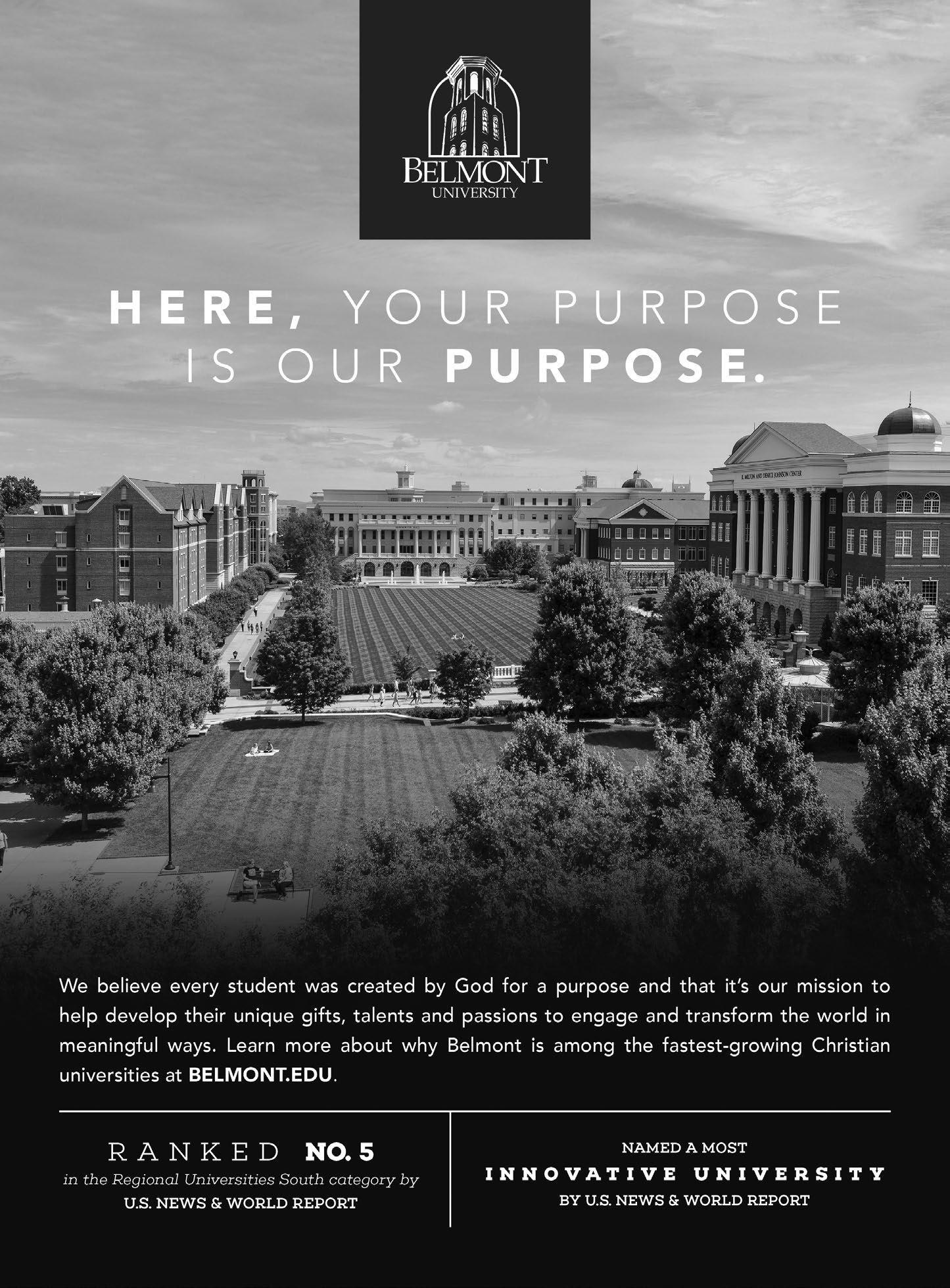
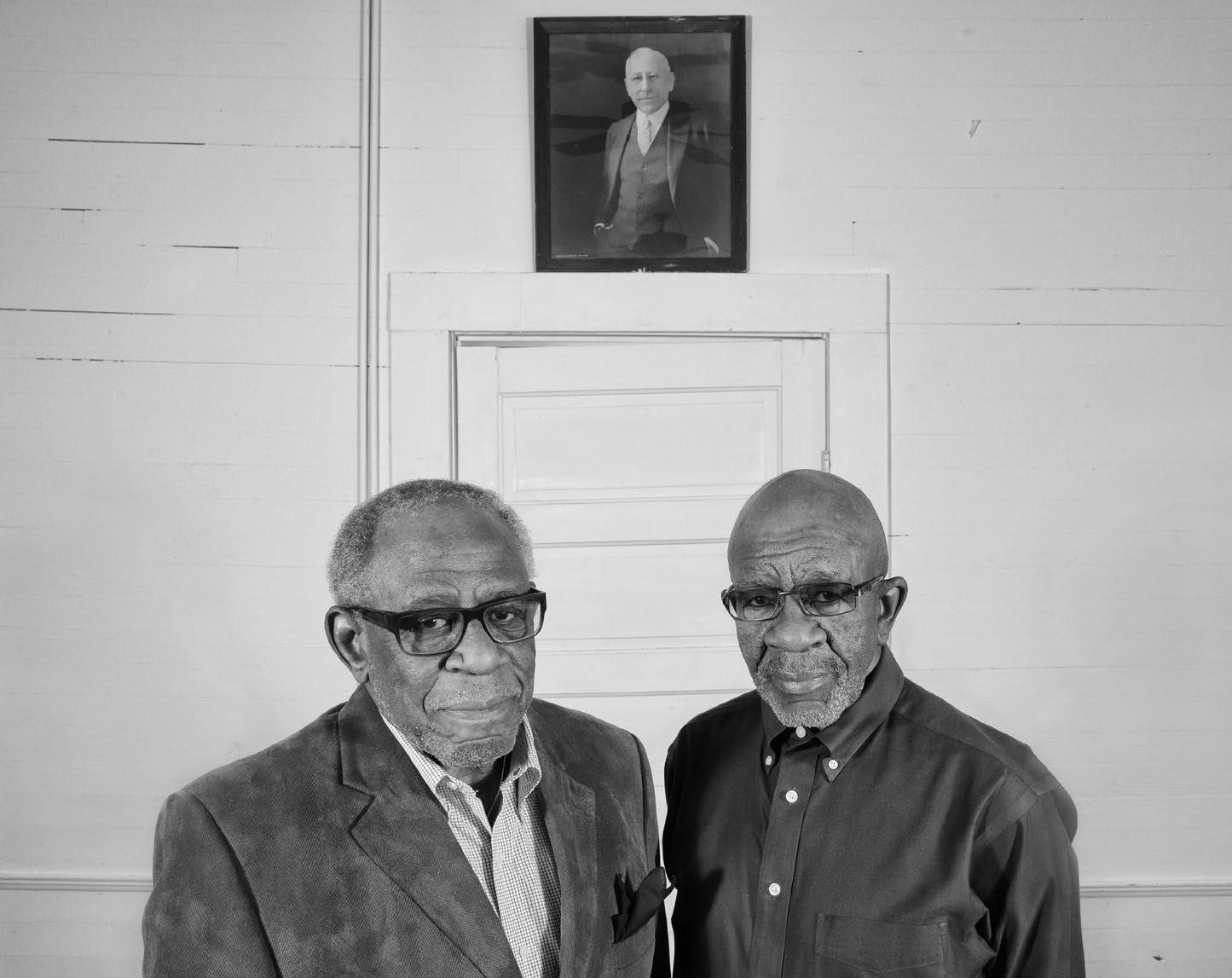

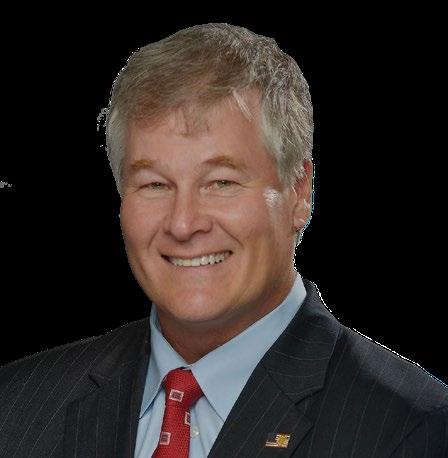
If you watched Tulane beat USC by one point on Jan, 2 in the Cotton Bowl, you likely saw Councilmember Russ Pulley, who represents District 25. Yes, he’s still an active referee and has just finished his 23rd season in the Southeastern Conference.
The Contributor talked with Pulley as part of a series called A Few Questions With where we interview councilmembers about their district’s most pressing issues.
How would you describe District 25?
District 25 lies within I-65 on the east, I-440 to the north, Battery Lane to the south, and primarily Hillsboro Road with an extension to include the commercial area west of Hillsboro. Through the redistricting process, District 25 will also include Oak Hill in the future.
In terms of demographics, we have a very small minority population in District 25. It’s 92 percent white, so it’s really not reflective of the entire county. Property values are pretty high compared to the overall average of Davidson County. And District 25 has a commercial area in which Hillsboro High School is a feature component right across from Green Hills Mall. We have a lot of small businesses in that area, which is all covered with an Urban Design Overlay.
What are the main concerns you hear from your constituents?
My constituents are concerned about growth. When I first came into office, they were concerned about buildings going up and density occurring in the commercial area. I am no longer hearing many complaints about density in the commercial area, but I still hear concerns about density in residential neighborhoods. People want to grow responsibly but protect and preserve what they cherish and love about their neighborhoods.
I hear about infrastructure improvement needs. People are keenly aware of stormwater issues related to development because we have flood areas with Browns Creek and Sugartree Creek and other areas.
We still hear about concerns about crime, although our concerns about crime certainly don’t rise to the level of crime in other districts. We don’t tend to be plagued by the serious violent crimes. But my constituents are concerned about the limits police have on patrolling neighborhoods and law enforcement around speeding and reckless driving in residential areas. The concerns tend to focus on traffic calming measures, parking enforcement, especially where people park along pedestrian infrastructure and bike lanes. We are woefully behind in sidewalk infrastructure, so people are always clambering for that.
As the chair of the Transportation and Infrastructure Committee, what are some of the opportunities you see for Nashville in terms of infrastructure improvements?
We’ve got so many infrastructure needs. With respect to my role in the Transportation Committee, when you look at 12th Avenue
• Transportation and Infrastructure, chair
• Budget and Finance
• Public Health and Safety
making now. They created some very protected bike lanes on 12th and developed interesting patterns with some areas for designated parking. Rather than having two lanes going in each direction, they have one lane in each direction and dedicated a middle lane as a turning lane. All indications are that it works, and the professionals will confirm that, but it’s just a tough sell for the community.
A similar proposal was made for the 8th Avenue corridor. But the businesses along 8th Avenue, especially around the Douglas Corner area, put up some pretty serious opposition to it. I’m interested to see how the 12th Avenue project is going to be received and if we can put together data to help convince people to do something similar on 8th because I think it would be very successful.
Those kind of projects are very important. Sidewalk infrastructure in the context of all of this is very important. Traffic calming features are very important — not only to residents in my district but all over the city. We just got through passing a bill related to traffic calming features, which generated a ton of discussion among councilmembers as to how these are applied.
Funding is always problematic. So, we’re hoping a more robust transit plan can be implemented to give us the kind of funding necessary to make significant improvements. Without that funding, I’m just not sure we’re going to be able to do anything but piece it together a little bit at a time.
Where is the city with a transit plan?
I have scheduled a meeting with NDOT to
issue now is implementing the city’s parking plan that’s been approved recently. That’s got all their full attention. Transit is a priority, I know it is in the Mayor’s Office, I just can’t tell you right now where they are with being able to roll out a robust plan.

I really hate that we missed the opportunity for funding sources we had in the last [plan], which were really good and engaged funding from areas other than Davidson County, which is something I’m very interested in. I don’t want the full burden of a transit plan to fall on the backs of our taxpayers in Davidson County. Let’s let the people who are using our roads and living in other areas help pay for transit.
You have a longstanding career in law enforcement including, among other positions, as a special agent with the FBI and an investigator with the U.S. Department of Labor. How has your experience helped you as a councilmember?
When I first was looking into running, I examined whether my skillset would be of value. My experience in law enforcement was over a wide-ranging area. I was a uniformed police officer, a uniformed state trooper, then I was a special agent in the FBI, and I ended up as an investigator with the Department of Labor. I found that a lot of the skills that I learned apply to Metro Council, specifically asking questions, investigating cases, gathering facts and being able to establish networks and relationships with people.
Communication is very important, and my professional background has provided me with the ability to ask questions the right way and
cinctly. But communication is something that you cannot take for granted, and I’m always working on it.
With the Police Department being tasked with handling increasingly difficult situations related to the Opioid crisis, mental health crisis, homelessness, and so on, what next steps would you like to see Metro take to address serving its most vulnerable residents?
I don’t know the answers, but I have thoughts.
It’s very important to collaborate. Collaborative plans tend to work, but they only work if they’re done properly and there is buy-in from all of those in the collaborative model. What I mean by that is we need collaboration between the city and certain nonprofits; and I think communication is one of the biggest hurdles between agencies when it comes to finding ways to maximize the services the most vulnerable populations need. Within that framework I think it’s important that information is accurate and factual.
I hear a lot of information coming from interest groups that quite frankly is not always factual. And there are talking points wrapped around information that tend to promote a particular agenda that’s just quite frankly not actually accurate. That tends to hurt credibility of communication between agencies and tends to impair the collaborative process. What I would like to see is more collaboration, more frank speaking, and the information around which these discussions are based need to be factually accurate.
Forty years ago, the US federal government slashed affordable housing budgets marking the beginning of the contemporary crisis of homelessness. Paul Boden, executive director of the Western Regional Advocacy Project, writing from the perspective of having experienced homelessness at a young age, outlines the history of social disinvestment in the country since the '80s.

Forty years ago, the federal government slashed affordable housing budgets of the Department of Housing and Urban Development (HUD) and the United States Department of Agriculture (USDA), marking the beginning of the contemporary crisis of homelessness. It has become political fodder for local politicians to say they will end homelessness “in this city” with complete disregard for the fact that no one city created homelessness, and none will end it on their own.
To understand why national rates of homelessness skyrocketed in the 1980s, we must ask: what systemic factors changed in the late 1970s and early 1980s to allow so many people to fall through the social safety net and end up living and dying on our streets? What has been happening over the last 500 years to result in Black and Indigenous people being disproportionately represented in the houseless population, and hit hardest by criminalization? Homelessness is a direct result of the decisions and funding priorities of the federal government, in a larger context of white supremacy, settler colonialism and neoliberalism. If the federal government had chosen to support affordable housing, health care, anti-poverty wages and programs, worker’s protections, and quality education — rather than war, tax breaks for the wealthy, and corporate welfare — mass homelessness would not exist in our nation.
In 1983, the Reagan administration tasked the Federal Emergency Management Agency (FEMA) with directing a national solution to the rising number of people without homes. FEMA, the federal agency responsible for disaster relief, did what they always do, which was to create thousands of short-term, emergency shelters. Given the economic downturn of the 1980s, popular sentiment was that the crisis would self-correct in time. But by 1987, the passage of the McKinney-Vento Homeless Assistance Act marked the first federal legislation devoted solely to "managing" the epidemic of homelessness that was growing across the nation. As real affordable housing programs were being defunded by the federal government, funding for shelter programs grew exponentially. For four decades, homeless shelters that were meant to be a temporary solution to a temporary problem remained the primary response, along with criminalization, to people sleeping en masse in the streets. This ain’t no temporary problem, and the Federal Government never honestly thought it would be.
Historical context is critical to understanding who is hardest hit by forty years of social disinvestment. Ongoing systems of white supremacy and settler colonialism that affect everything from housing to healthcare, education to transportation, and especially the criminal (in)justice system, mean that homelessness and its myriad related traumas disproportionately

impact people along intersectional lines of race, gender, sexuality, disability, immigration and so on. This is no accident.
It is exactly across these intersectional lines of difference that so many of us have joined forces in working for meaningful and deep change, building on ongoing fights for prison abolition, racial justice, disability justice, and countless other struggles. In 2005, for example, several groups organizing in the western US came together to create the Western Regional Advocacy Project (WRAP) and across the country other community groups are doing the same thing all fighting to give life to the realities of people with firsthand experience of these oppressive systems and to push for dignified solutions. We are continuing the fight to combat carceral shelters, end the criminalization of racialized poverty, stop the sweeps, and fight for actual housing, healthcare, education and dignity that all human beings deserve. True community organizing brings allied local groups together to find common threads and strategize paths forward, mobilize legal resources for members, creates artwork and shared messaging, connects communities through coordinated direct actions, research and so much more. Seek out these groups and expand the Human Rights framework of dignity and respect for people as not a charity issue, it is the least we should demand and expect of our government.
After 40 years, the system is still doing exactly what it was designed to do: manage and minimize the presence of homeless people. It was NEVER intended to address homelessness in any real way. I was here 40 years ago, and I’m still here today. The bunk beds and crash pads that FEMA funded wasn’t implemented to create a new category of housing status for members of a community but that’s exactly what it has done. After 40 years of inhumane abject failure, it is past time to recognize “managing visible homelessness” isn’t a solution to shit. Homelessness is just a more visible manifestation of a society lacking in justice, not just the injustice of homelessness.
Our organizing and public education must continue to build on the realities of all oppressed people so we lift our connection to each other and our power together!
The Western Regional Advocacy Project combines street outreach, movement building, and national policy work to help bridge local-national divisions that have hampered homeless advocacy and seeks to expose and eliminate the root causes of civil and human rights abuses of people experiencing poverty and homelessness in communities.
Every year around this time, folks are looking for ways to improve or ways to forget the hell that was the year before. While resolutions are fraught with self-help mantras and a lot of toxic messaging, we think setting intentions that involve community and healing are lovely. In 2023, we hope to see rejuvenation, neighbors loving and helping neighbors and a renewed sense that taking a rest every once in a while should not be revolutionary. Here are a few ideas for how to work toward these goals in the New Year.
TELL YOUR FRIENDS TO BUY AND READ THE NEWSPAPER FROM A CONTRIBUTOR VENDOR.


You’re already there if you’re reading this, but chances are you have at least a couple of folks in your circle who’ve never had the pleasure of interacting with one of our vendors or reading the paper they sell. Vendors grow their microbusinesses by purchasing more copies for 50 cents, which they sell on the street for $2. This is the vendors' money to keep. Free papers, gear and map badges (reserved locations) incentivize vendors to grow their microbusinesses. The part where you come in is helping them increase their customer base. It’s easy to do marketing for something you already love and support.





The Black Mental Health Alliance of Nashville BMHA Nashville is a nonprofit working to increase health status for Black Nashvillians. There are many ways to get involved with their work: They host community trainings and work to reduce health disparities through awareness, advocacy, lobbying and education. “Our group aims to remove the barriers that Black people experience getting access to or staying connected with emotional health care and healing. Through our support groups, community discussion, and forums, we hope to highlight the mental health needs of Black Nashvillians and address their concerns through community organizing and by connecting members with local Black mental health providers,” the group says.

In Nashville, workers must make more than $17.40 per hour or $15.40 with health benefits to survive the current economic world, according to a United Way report that assesses data and measures financial hardship across the state. Many workers in Nashville are making much less — minimum wage is just $7.25 per hour — and they are unable to both work and live in the same city. The United Way report shows that in order to be stable, not just surviving, workers need more than $32 per hour in Nashville. Nashville Living Wage launched in 2021 and they’re working a campaign to ask employers to assess their current wages and ensure their workers have enough to survive. The organization will then certify the employer if they are paying at or above the threshold. If you own a business, do this assessment and if you work somewhere, this could be a great starting point for a conversation about wages.


At Sacred Sparks Ministry, Lisa Sparks has a helluva thing going with her Laundry Ministry. So many take for granted keeping their clothes clean and having the ability to have fresh items at their disposal. Sparks picks up clothes from folks, helps get them laundered and gets them back to folks clean and ready to wear. A few bucks goes a long way so if you only have a small amount in your budget to give, just think that $5 could do a couple loads of laundry for a family in Nashville.







This one is evergreen and a practice to begin and keep doing. Put together small bags of essentials to hand out at stoplights. They don’t take up a lot of space, and they aren’t expensive to put together. Consider the following items put in a gallon plastic bag: protein bars, gift cards to fast food restaurants, hand warmers in the winter, bottles of water, trail mix or other high protein snacks, hand sanitizer, a face mask and a slip of paper with local resources listed on it.

The newly created Cat Colony Food Pantry is filling a gap for folks who are already taking care of community cats, but might need some additional resources feeding and caring for them. Many kind and giving folks spend their time and money loving on cats and ensuring they’re as safe and comfortable as possible when and if they end up outdoors. Head over to Instagram (@catcolonyfoodpantry), where Erica Ciccarone, who runs the endeavor, documents her efforts. There’ll be chances to learn about what kitties need, and there’s a link in there to donate cash or items to the pantry.

Do you know your neighbors? No shame if you don’t, but I recommend at least waving, and maybe some conversation, particularly if your neighbor seems like they could use to be checked on. As neighbors, our family tries not to be too nosey, but we also try to notice if a neighbor is gone for a long period of time, or if it doesn’t seem like they’re bringing packages in. Instead of worrying from afar, it’s nice to ask from across the street if there’s anything your neighbor needs that they cannot do for themselves. Leave them a note in the mailbox with your information if you’re afraid to knock on the door.
Especially if you’re already taking walks through your neighborhood, begin the practice of cleaning up as you go. You can wear gloves or get a grabber (we use a dog pooper scooper, you’re welcome) and carry a bag with you as you go. We don’t do it every time we walk, but it’s a great habit to incorporate into long weekend walks or hikes. Of course, we’d prefer if folks didn’t toss trash outside, but until they stop doing it, it makes sense to help clean up where you can.




It’s no secret that we’ve been partnering with Please Vote Nashville to publish an exhaustive election issue for each and every local election. Voting has implications nationally, but locally it means a lot more — and far fewer people vote in elections where the folks running are representing their exact neighborhood. With Metro Council and mayoral elections around the corner, now is the time to make sure you’re registered, know where to find your ballot to review beforehand and keep checking back with us for candidate profiles.




This one is tough for most folks, but it’s incredibly important. I am probably the worst at filling my rest reserves, but it’s a resolution worth making. Forget all the normal hoopla about changing yourself in 2023 or becoming some superhuman version of yourself. Love your body and mind enough to give it what it really wants: rest.

Annie K. is a music business major, class of 2022. She has great motivation and wants to get in the music industry. She's from Kansas City, but now calls Nashville her home. ART BY CONTRIBUTOR VENDOR WENDELL J.


L a humanidad genera 2,5 quintillones de bytes de datos, suficientes para maximizar la capacidad de almacenamiento de unos 40 millones de iPhones, todos los días.
Gran parte se almacena "en la nube", lo que significa que se guarda en centros de datos helados y en expansión.
Desafortunadamente, estos centros de datos están contribuyendo a la destrucción del medio ambiente. Representan hasta el 1,5 % del consumo total anual de electricidad en el mundo y son responsables de la emisión de más de 200 millones de toneladas métricas de dióxido de carbono, a la par de las emisiones anuales de todos los viajes aéreos comerciales en todo Estados Unidos.
Y dado que la cantidad total de datos creados se duplica cada dos años, el problema está a punto de empeorar. Para seguir el ritmo de la cantidad de datos que estamos creando, toda la superficie del planeta debería estar cubierta con centros de almacenamiento de datos para 2060.
Muchas empresas y ambientalistas han reconocido durante mucho tiempo el daño ecológico de nuestra adicción al almacenamiento de datos. Los centros de datos usan un volumen asombroso de agua, alrededor de 3 a 5 millones de galones por día. Eso es suficiente para una ciudad pequeña de 30.000 a 50.000 habitantes, según el profesor de la Universidad Tecnológica de Texas, Venkatesh Uddameri.
También exigen grandes cantidades de minerales de tierras raras para construir su hardware. El proceso de minería para extraer esos minerales es notoriamente terrible para el medio ambiente.
Las empresas pueden hacer que estos centros de datos sean menos dañinos, pero en realidad no pueden hacerlos ecológicos. Y el apetito voraz de datos del mundo está anulando rápidamente cualquier mejora marginal. Por ejemplo, los centros de datos están en camino de representar el 14 % de todas las emisiones globales para 2040. Eso es equivalente a lo que emite actualmente todo Estados Unidos.
La solución real radica en repensar por completo cómo almacenamos los datos.
En lugar de almacenarlos electrónicamente, los científicos son optimistas de que pronto podríamos codificar datos en hebras de ADN, un medio mucho más poderoso, a gran escala.
El ADN es mucho más eficiente en el almacenamiento de información que cualquier otro método existente. Un solo gramo de ADN puede almacenar hasta 215 millones de gigabytes de información; eso equivale a aproximadamente 10 millones de copias de la totalidad de Wikipedia. En teoría, si el ADN se utilizara en todo su potencial, todos los datos del mundo podrían almacenarse en la caja de un camión.
En Twist Bioscience, la empresa que dirijo, desarrollamos un proceso de transformación para "escribir" datos en pequeños chips de silicio usando ADN. Nuestros científicos almacenaron

recientemente una serie original de Netflix en ADN sintético. Y más recientemente, los investigadores del Instituto de Tecnología de Georgia, en colaboración con nuestro equipo, descubrieron una forma de aumentar la eficiencia de los métodos actuales de almacenamiento de datos de ADN en un factor de 100.
A diferencia de los servidores en los centros de datos, los métodos de almacenamiento basados en ADN son ecológicos. Una vez que la información se convierte en ADN, no consume energía. Esos datos también duran mucho más; mientras que los discos duros magnéticos convencionales se desgastan y necesitan ser reemplazados cada década, los datos que han sido codificados en el ADN teóricamente podrían durar más de 500,000 años.
Nuestra civilización está produciendo más datos que nunca. Sin nuevos enfoques, el almacenamiento de datos amenaza con empeorar las crisis ambientales y generar otras nuevas. Y con cientos de millones de nuevos usuarios de Internet agregados cada año, la urgencia no podría ser mayor. Los enfoques como el almacenamiento basado en el ADN pueden ayudar a aprovechar todo el potencial y la promesa de la era de la información sin sacrificar la salud del planeta.
Emily Leproust es directora ejecutiva y cofundadora de Twist Bioscience.

Envíenos sus sugerencias por e-mail: news@hispanicpaper.com ó 615-567-3569

Miércoles

Jueves 26 de enero de 6-7 p.m., Reunión Virtual (webex); Código de Acceso 2497 281 4883; Contraseña YqNpsCDr976; teléfono 720-650-7664
Para información detallada sobre los cambios propuestos e información para registrarse para las reuniones, visite WeGoTransit.com comenzando el 17 de enero o llame a Atención al Cliente al 615-862-5950.


WeGo está proponiendo la expansión de nuevas zonas de WeGo Link, cambios de ruta, y ajustes de horario que serán efectivos el 2 de abril de 2023. Cambios de ruta y ajustes de horario están propuestos para las rutas 18 y 19 y extensión de horario nocturno para la ruta 77. Ajustes de horario menores, autobuses y choferes adicionales están propuestos para las rutas 3, 4, 8, 52, 55, 56, 76, y 79 para mejorar la confiabilidad del servicio. Los cambios de frecuencia y extensión de servicio propuestos para las rutas 3, 4, 7, 8, 22, 23, 50, 52, 55, 56, 75, y 77 (excepto la extensión de horario nocturno) han sido pospuestos.
Tenga en cuenta que no se requiere la asistencia a las reuniones antes mencionadas para hacer comentarios. Puede enviar sus comentarios por correo a WeGo Public Transit Community Engagement, Attn: Public Meeting Comments, 430 Myatt Drive, Nashville, TN 37115; llamar a Public Comments al 615-862-5686; o enviar un correo electrónico a WeGoTransit@nashville.gov hasta el 7 de febrero de 2023.
“The Contributor” está trabajando con uno de los principales periódicos en español La Noticia para llevar contenido a más lectores en Middle Tennessee. Nuestros vendedores de periódicos han pedido durante mucho tiempo que nuestra publicación incluya contenido que apele al interés de residentes de habla hispana en nuestra comunidad.
“The Contributor” is working with one of the leading Spanish-language newspapers La Noticia to bring content to more readers in Middle Tennessee. Our newspaper vendors have long requested that our publication include content that appeals to the interest of Spanish-speaking residents in our community.
 By Eddie S. Glaude Jr.
By Eddie S. Glaude Jr.
"There have been superficial changes. Morally there has been no change at all and a moral change is the only real one." — James Baldwin
James Baldwin, who died in 1987 after a lifetime of writing about the Black experience in America, wrote with extraordinary power and poetic sensitivity. In Begin Again, Eddie S. Glaude Jr. mines the life, times, and writings of Baldwin to confront the truth of our racial history that belies what we Americans profess to believe about ourselves. Are all men created equal? Does our ideal of American democracy exist within a pristine shining city on a hill? Are we one nation, indivisible, with liberty and justice for all? Glaude brings context to what Baldwin believed to be the lie American society can't let go of: that Blacks are inferior to whites. Baldwin believed in the hope that a moral reckoning would occur during numerous historical "reconstruction" periods that would narrow the value gap between Blacks and whites. But those hopes for a moral victory over unjust prejudice have all been dashed time and time again--most recently by the rise of the Republican right, white supremacists and Donald Trump. These groups are most certainly beating a very old dead horse in their desire
to retain power over everyone they see as lesser or other. Glaude does an admirable job of honoring Baldwin's ghost while also adding his own stylish, literate and poetic observations — no doubt honed and perfected in a close study of the man whose writings he admires. America cannot move into the future without dealing with our sins of the past. It is our responsibility to finally bind and heal the wounds of our Black brothers and sisters. It is a responsibility that cannot be abdicated. We have tried and failed to fulfill this responsibility numerous times. Having tried and failed, we must get up, dust ourselves off, regroup, and begin again. Moral right is on our side. In the words of poet Lyle Lovett:
"Look
I understand too little too late I realize there are things you say and do You can never take back But what would you be if you didn't even try You have to try"
To learn more about James Baldwin's America and author Eddie S. Glaude Jr. listen to his conversation with Lee C. Camp on the No Small Endeavor podcast at nosmallendeavor.com
I was born into drugs. My momma was on drugs and alcohol before I was born and she still had them in her system when I was born. During my mom and dad’s marriage, my mom was a bar maid in South Nashville and I remember that at a real young age.
I think I was born to be an entertainer. I was signing from the age of three years old and I’m still singing now. Since then, so much has happened in my life. I think the world would appreciate the good and true story. The thing is, I went away for 10 years because of a mental condition. I had to escape to get out. I sang at the old hobby shop with my band called William and the Hurricanes. I even had a baby blue Beatle’s suit my brother gave me. I had to grow into it because it was a little big, but I had it for several years.
I got in trouble with the law, so the
band broke up. One of my band mates is a country singer now, John Wesley Ryles. He married Conway Twitty’s daughter. He sings a song called, “Kay” where he talks about, “starin' out at music city from my cab.”
I would love to get in touch with him and would love to hear from him if anyone reading this knows him. I have things to tell him that would - if he still has hairblow his hair off!
After I got out of the mental institution I started experimenting with drugs. And I drank alcohol. I never was considered an alcoholic, but I drank more when I did drugs. I got sick of hurting people I loved in my addiction so I made them lock me up to get sober.
I’ve been clean now 15 years and I feel like I’m on my way to better things. Partly because of The Contributor newspaper,
who I think of as my family. I’ve been at the paper about five or six years and it gives me the opportunity to do what I want to do.
I like to sell where there’s a lot of foot traffic. Through The Contributor I can work at my own pace. I can get things I aways wanted to have because of the funds I save from my check and selling The Contributor. It also helps me buy my medicine, and get the extra food I need and get more instruments and spoons, which I always need because I play them so hard.
I think I’ve got better things coming. I have a surgery on my back soon and I hope it will help my pain. I feel like I was done wrong by the city when I was hit by that car. I filed a civil lawsuit, but I lost. The city should have done more for me than just give the driver tickets.
I have a dream. My dream is to do another music demo. I have two more dreams. I’m not going to quit until I make America’s Got Talent and I’m not going to quit until I make The Voice. We lost the original voice host Blake Shelton. He’s got a new show now called Barmageddon
I don’t want to ever sing in bars. I think that might be a trigger to my drugs or my drinking. I don’t ever want to be back on drugs again. I hurt too many people but the main person I hurt was me. I used to could hold song notes real long. With my COPD that kind of hurt it when I was doing drugs.
Now my dream is to be more into entertaining and hopefully meeting my friend John again and doing a demo again and showing him how far I’ve come. He wouldn’t be surprised that I kept it up, but I think he’d be pleased.
Charles Walter Stansby Williams (1886–1945), the editor of the following selections, is today probably the third most famous of the famous Inklings literary group of Oxford, England, which existed in the middle of the 20th century, and which included among its ranks the better-known and longer-lived Oxford Dons J.R.R. Tolkien and C. S. Lewis—but he was arguably the most precocious and well-read of this eminent and intellectually fertile group. He was also known to have influenced Dorothy Sayers, T. S. Eliot and W. H. Auden. Lacking a proper degree unlike his fellow Inklings, this genius Cockney-speaking author, editor, critic, and playwright was eminently well-versed in both philosophical and theological writings of the remote past as of the present day (the mid-20th century) and used this familiarity to good effect in his poetry, supernatural fiction and his lesser-known devotional selections designed for the spiritual benefit of the faithful in the Church of England. This series of profound quotations, encompassing all walks of life, follows the sequence of the themes and Bible readings anciently appointed for contemplation throughout the church's year, beginning with Advent (i.e., December) and ending in November, and reaches far beyond the pale of the philosophical and theological discussions of his day. It was under his hand, for instance, that some of the first translations of Kierkegaard were made available to the wider public. It is hoped that the readings reproduced here will prove beneficial for any who read them, whatever their place in life's journey. — Matthew Carver
SIN is a robbing of God: a robbery which becomes apparent in our arrogant endeavour to cross the line of death by which we are bounded (i. 18, 19); in our drunken blurring of the distance which separates us from God; in our forgetfulness of His invisibility; in our investing of men with the form of God, and of God with the form of man; and in our devotion to some romantic infinity, some ‘No-God’ of this world, which we have created for ourselves.
Karl Barth: The Epistle to the Romans.
O LORD, shew me this matter; one fleeth from the world for Thy Name’s sake, and another receiveth and is gracious for Thy Name’s sake.
The Paradise of the Fathers.
A MAN will always be tripped up by that thing which he will not cut off from himself.
The Paradise of the Fathers.
THY kingdom come . . .
Christ Himself may be the kingdom of God, whom we day by day desire to come, whose advent we crave to be quickly manifested to us. For since he is himself is the resurrection, since in him we rise again, so also the kingdom of God may be understood to be himself.
St Cyprian: On the Lord’s Prayer.
OUR accesses to His presence are but His descents into us; and when we get anything by prayer, He gave us beforehand the thing and the petition.
John Donne: Letters.
MEEKNESS hath three degrees. The first degree is: a man to be subject and lowered to his sovereign and not preferred or raised above him that is equal with him in estate. The second is: to be subject to his equal like in estate and not to be raised or preferred above his underling. The third and sovereign degree of meekness is: to be subject and lowered to his underling, that is, he that is less in estate than he.
The Mirror of the Blessed Life of Jesus Christ, tr. by Nicholas Love.
NOW the reason why there are spiritual properties in all the material things of this world is only this, it is because the matter of this world is the materiality of the Kingdom of Heaven, brought down into a created state of grossness, death, and imprisonment, by occasion of the sin of those angels who first inhabited the place or extent of this material world. Now these heavenly properties which were brought into this created compaction lie in a continual desire to return to their first state of glory; and this is the groaning of the whole creation to be delivered from vanity which the Apostle speaks of.
William Law: An Appeal.
IN Adam I fell, in Adam I was cast out of Paradise, in Adam I died; how shall the Lord call me back, except He find in me Adam; guilty as I was in him, so now justified in Christ.
St Ambrose: On the Death of Satyrus.
IF you kept your body in accordance with virtue, your desires would not be of this world.
Leonardo da Vinci: Notebooks.
ALL men by nature hate each other. They use their lusts as far as they can for the public good, but it is only a feint and false image of love, for at bottom there is nothing but hate.
Pascal: Pensées.
TO make rapid progress and to reach the mansions we wish to enter, it is not so essential to think much as to love much: therefore you must practise whatever most excites you to this.
St Teresa: The Interior Castle.
WHEN a man’s behaviour, his mission, his exercise of authority, impress us as being of divine authority, what do we really mean? If we take the word ‘divine’ seriously, we mean that in this man the invisible has become visible, that what he is calls to mind what he is not, that a secret lies above and behind his behaviour, and is hidden as well as illustrated by his con- duct. We do not in any case mean that the secret is to be identified with his actions.
Karl Barth: The Epistle to the Romans.
LET God operate in thee; hand the work over to him and do not disquiet thyself as to whether or no he is working with nature or above nature, for his are both nature and grace.
Eckhart: In Collationibus.
HERE you have the true reason why revenge or vengeance is not allowed to man; it is because vengeance can only work in the evil or disordered properties of fallen nature. But man, being himself a part of fallen nature and subject to its disordered properties is not allowed to work with them, because it would be stirring up evil in himself, and that is his sin of wrath or revenge. God therefore reserves all vengeance to Himself, not because wrathful revenge is a temper or quality that can have any place in the holy Deity, but because the holy supernatural Deity, being free from all the properties of nature, whence partial love and hatred spring, and being in Himself nothing but an infinity of love, wisdom, and goodness, He alone knows how to over-rule the disorders of nature and so to repay evil with evil, that the highest good may be promoted by it.
William Law: The Spirit of Love.
THE peace of the celestial city is the perfectly ordered and harmonious enjoyment of God and of one another in God. The peace of all things is the tranquility of order.
St Augustine: City of God.
Sponsored by Matthew Carver, publisherWHOSOEVER seeketh from God ought besides God, doth not seek God chastely.
St Augustine: Sermons.
PERFECTION of a thing is threefold: first, according to the constitution of its own being; secondly, in respect of any accidents being added as necessary for its perfect operation; thirdly, perfection consists in the attaining to something else as the end . . . This triple perfection belongs to no creature by its own essence; it belongs to God only, in Whom alone essence is existence; in Whom there are no accidents; since whatever belongs to others accidentally belongs to Him essentially; as, to be powerful, wise, and the like, as appears from what is stated above; and He is not directed to anything else as to an end, but is Himself the last end of all things. Hence it is manifest that God alone has every kind of perfection by His own essence.
Aquinas: Summa Theologica.
HE to whom (God) is different in one thing from another and to whom God is dearer in one thing than another, that man is a barbarian, still in the wilds, a child. He to whom God is the same in everything has come into man’s estate. But he to whom creatures all mean want and exile has come into his own.
Eckhart: Sayings.
ALL our moralities are by our outworks, our Christianity is our citadel; a man who considers duty but the dignity of being a man, is not easily beat from his outworks, but from his Christianity never.
John Donne: Letters.
GIFTS of nature are common to good and bad, but grace or love is the peculiar gift of Thine elect, and they that bear this mark are accounted worthy of eternal life.
This grace is so excellent, that neither the gift of prophecy, nor the working of miracles, nor the understanding of deep mysteries, is of any worth without it.
But neither faith, nor hope, nor any other virtue is acceptable to Thee without charity and grace.
Thomas à Kempis: Imitation.
THE self, the I, the me, and the like, all belong to the evil spirit, and therefore it is that he is an evil spirit.
Theologica Germanica.
DO not suppose that our Lord has need of any works of ours; He only expects us to manifest our goodwill.
St Teresa: The Interior Castle.
I CONSIDER Jesus Christ in all persons and in ourselves: Jesus Christ as a father in His Father, Jesus Christ as a Brother in His Brethren, Jesus Christ as poor in the poor, Jesus Christ as rich in the rich, Jesus Christ as Doctor and Priest in the priests, Jesus Christ as Sovereign in princes, etc. For by His glory He is all that is great, being God; and by His mortal life He is all that is poor and abject. Therefore He had taken this unhappy condition, so that He could be in all persons, and the model of all conditions.
Pascal: Pensées.
A recent study showed that 80 percent of those who made new year’s resolutions failed to keep them. Immediately after completing their research, recent studiers gave up on their resolution to not publish any more discouraging data. So how are yours going this year, Capricorn? Even if you didn’t make any, you probably thought of which ones you weren’t going to make. What recent studies often don’t understand is that for folks like you and me, new year’s resolutions aren’t about the statistics. They aren’t about stamina. I don’t think it really even matters how many of us make it all the way to [2023]. Resolutions are a way of taking stock. They’re an opportunity to identify the kind of people we’d like to be. And they’re a chance to take a step in that direction. That’s a kind of resolution you can even make today. So, whether you end up in the 80 percent or the 20, my non-scientific study recently showed that you’ll be better off for having made yourself a promise, even if it’s one you couldn’t keep.
So it’s only been a week or so since we were getting all tearyeyed promising to never forget former acquaintances and whatnot, but I say that sticking with the Auld Lang Syne is just going to get you the same auld results. Aquarius, I think it’s time to make a New Lang Syne. I think it’s time to remember some new acquaintances. To live some to experiences. If you really want to drink that cup of kindness and pick those daisies, fine, it’s time to leave the past behind and take a bold step forward.
Alright, Pisces, I’m giving you an extension. Starting today, you have two weeks to do all the things you were supposed to get done in [2022]. That’s it. Two weeks. No late fees. No points off your final grade. You’ll need to get started this afternoon. Make a quick list. Start with whatever is easiest and just keep moving. In two weeks—that’s two weeks from this very moment—your time is up. Whatever you finished is done. Whatever you left unfinished, you just have to let go. Two weeks of looking back and then it’s only moving forward.
The end-of-history illusion” sounds like it might be a particularly apocalyptic bit of Chris Angel street magic. Unfortunately it’s just a common psychological phenomenon that almost all of us experience. In

fact, you’re probably experiencing it right now. The end-of-history illusion is the belief that, although everything has been changing up until this point, the future will look pretty much like the present. Teenagers feel that they’ve grown and changed so much since they were children, but they tend to think they’ll stay relatively the same into adulthood. Adults can see that they’ve learned a lot since they were teenagers, but they assume they won’t change much in the future. Even Chris Angel probably thinks he’ll stay about the same over the next 10 years. The trick is, we’re all wrong. The future will be as varied and unpredictable—as educational and transformative as the past has been. Perhaps more so. We won’t know until we get there.
This is the time of year when people go around saying things like “I heard it’s supposed to be cold this week,” and, “They say it’s is gonna get down in the single-digits tonight.” I just have to tell you, Taurus, that I always feel more than a little hurt by those kind of offhanded remarks. I mean, I know it’s unbecoming of an amateur astrologer to be jealous of professional meteorologists, but I am. People act like my predictions are so wishy-washy and unreliable and then you treat the weatherman like he’s never been wrong. Just because I don’t use specific “numbers” or have animated green-screen maps behind me, you act like I’m making all this up! So, Taurus, I’ve consulted The Stars on your behalf and I’ve learned that it’s going to be a cold one this week. It might even get down into the single-digits tonight.
Live from New York, it’s not as good as you remember it! Oh, Gemini, you’re always so disappointed by this week’s episode and this season’s new cast members, but isn’t it possible you just have a “best of” memory?
I mean, it’s only natural that you remember all your favorites. You remember the funniest moments and the most influential people. You remember the important conversations and the meaningful relationships. Of course you do. Who could blame you? But when you judge your daily life up against the highlight reel of your past, it just doesn’t measure up. Think of it this way, every season of your life has new characters and new stories and new scenarios. You can compare them to the best of what you’ve seen and watch them fall
short. Or you can experience them in real time and learn to accept the average moments so you’ll be paying attention when the exceptional moments arise.
Maybe if you just had a sandbox. A sandbox and a little plastic rake and a toy truck with giant tires and a old bent kitchen spoon. Maybe then you could work this all out. It just feels like there’s no time anymore. There’s no time to think because you always have to act. There’s no time to dream because every day they expect you to do. And how could you ever find time to play when you’re always expected to perform. It feels like you’re in a grown-up trap and you just want to get back to the playground. I’ll tell you the trick, Cancer: You’re really still in a great big sandbox. The stakes aren’t any higher now than they were then. Your toys aren’t any more important, you’re just afraid that they are. So learn to play with the toys you’ve got now. If you can’t make this job feel like recess, than you might nee
Last year was all about todo lists, Leo. This year you get to throw them out. Don’t worry, it isn’t because you aren’t going to do anything. It’s because you’re going to do more. This is a year to do it before you even have time to add it to the list. This is a year to do it as soon as you see it can be done. Lists were for last year. This year, you’re getting it done.
Everybody loves a fresh start, Virgo. We all need a clean slate. But what if I told you there’s an even cleaner slate? A slate so clean you could eat off of it? What if I told you that you could have a slate that cleans itself every day? So, here’s the deal, Virgo, January is great and all with all it’s bright shining promises, but I’ve recently learned that January is a totally made up thing. Seriously. The significance of all the days and months on the calendar is totally arbitrary. You don’t have to get to a new year to start making new changes. Make this the year that you give yourself a clean slate every day. Maybe twice a day. Maybe every 15 minutes if you need it. You don’t even have to make a mistake, you can wipe it down just for fun.
Doctor Frankenstein gets such a bad rap. A new Prometheus, ol’ Victor just tinkering with forces far greater than his own understanding. Briefly harnessing science and nature in an inadequate bridle and then being trampled by the consequences. I mean, just because the guy wanted to do something new everybody acts like he deserves to be destroyed by his own creation. So maybe it’s just a metaphor for art or parenthood or education. I don’t really know. All I can say, Libra, is that when the monsters you’ve created find their way back home you can’t afford to be afraid. You need to hear the creature out. Sit down with it. Have some tea. Get to the bottom of your own story, even if it kills you.
What’s in your basement, Scorpio? I mean, what’s really down there? Not to be weird or anything, it’s just that you’re always talking about how you’ve got to clean out and organize down there, you’re always collecting boxes and acting like it’s a full time job, but you’ve never mentioned what exactly you keep in your basement. I’m beginning to think you don’t know. Of course, it’s personal, but I think it might be important. I’ve just found that if I can’t talk specifically about what’s going on in my deepest depths, I need to do some more digging.
Scrrraape. Scrrraape. Scrrraape. Just a little more now. Scrrraape. Scrrraape. Now do the back window. Scrrraape. Scrrraape. Scrrraape. Finally, you’ll be able to see the road! It can be so tedious to remove the layers of ice before you can even begin that long drive to work. And it’s exhausting to think you’ll have to do it all over again tomorrow. But you sure wouldn’t want to drive down the road if you hadn’t done the work. It’s the same thing with your insides, Sagittarius. Those fears and resentments and hopelessnesses that build up on the surface keep you from seeing what’s in front of you all day. It can really help to wake up a little bit early and take some time to scrrraape that heavy layer off your soul. It just takes a few minutes alone. A moment to slow down and remember who you want to be. And yes, you’ll have to get up and do it all again tomorrow, but do it all again tomorrow, but it’s just for a season. There's a thaw coming.
These Hoboscopes originally ran in the Jan 8, 2014 issue of The Contributor. Mr. Mysterio is not a licensed astrologer, a trained storm spotter, or a can of black eyed peas. Check out The Mr. Mysterio Podcast. Season 2 is now playing at mrmysterio.com. Got a question, just give Mr. M a call at 707-VHS-TAN1
IJ Quinn III moved to Nashville in March of 2022, he’s from the small town of Warsaw, NC.
He’s been volunteering with The Contributor for about three months.He says he wanted to help people he saw on the street, and he felt this was the best way for him to do that.
So how did he find The Contributor ?
He moved into an apartment around the corner from where the paper is located (154 Rep. John Lewis Way), he walked up to the church, and asked about volunteering with them.
In his short time here, he’s learned he REALLY enjoys helping people. He feels it’s a part of his purpose, and he plans to continue!
So what does he plan to do with what he learns from here? He has you might say he has GREAT EXPECTATIONS!
He wants to take his experience here and use it to help others not only locally but on a GLOBAL scale.
There is SO much more to IJ than his ‘volunteer spirit’, and his desire to help others.
A bit of a nomad, IJ left his
hometown and lived in Chicago for eight years from 2003-2011. A record deal and a divorce led to another move to a move to Los Angeles, Calif., in 2015.
In the short time I spent with him I can tell you he’s a colorful individual with many aspirations.
He came from humble beginnings growing up on a hog farm in Warsaw, NC.
Perhaps because of his upbringing, or maybe in spite of it, he became a self-taught musician, who enjoys ALL genres of music.
He was in the blinds round of The Voice, which eventually led to a record deal.
Early in his career he recorded his music in Columbia, SC with The Beach Music Circuit featuring Bill Pinkney and the Drifters, Maurice Williams and the Zodiacs, and Percy Sledge. He even played the Alabama Theater with with Jeff Cook a founding member of the group Alabama.
He formed the band Future Feats that was together from 2007-2019 (pre-pandemic) and had recorded eight albums both EP (Extended Play) and LP (Long Play) under his own name and the
stage name Josh Quinn.
He was even featured on Friday Night Lights with a song titled “When They Want It The Most.”
He’s toured the US and Canada with the likes of The Kooks, The Wombats, Matt and Kim, Betty Who, Young Blood Hawke.
Anyone who comes to Music City to make it in the music business can attest to the fact that IT’S NOT EASY!
IJ knows that all too well. He was eventually dropped by his label, his agent, his entire team, but all was not lost. He didn’t stay down.
He’s currently working with Mark Needham on a new album! Proof that you can’t keep a good man down!

His aspirations don’t end with music though. He would also love to try acting, directing and producing as he enjoys being both in front of and behind the camera.
More than anything IJ’s message is one of LOVE, he’s wants to lift up humanity until there are equal rights for ALL!
As he strives to accomplish his lofty goals he will indeed prove to be a “global superstar!”
The end of the year 2022 is a memory many airline passengers will not forget, but not for good reasons. Many people have followed the news on the airline cancellations due to extreme weather. How will the fallout of expenses and the medical and mental health disruptions affect those involved?
According to MSNBC news, more than 13,000 flights were canceled due to extreme weather. One customer in Des Moines, Iowa, Mike Patel, said that he had seven family members stranded at the airport due to cancellations, and had to spend over $10,000 to get car rentals and hotels. According to reporting from Kansas City KSHB news, one passenger had nobody to help him,
no money, and nowhere to go. Basically, this man was homeless, not by choice.
We, the homeless, experience the above situation on a daily basis. The only difference is the people at the airport have a transportation advocate named Pete Buttigieg (the U.S. Secretary of Transportation). He has offered to sue for over tens of thousands of dollars per passenger.
The airline cancellations are tragic, but temporary. We have no advocate for the homeless population who speaks for us in Washington? No one to sue for losses that we suffer on a daily basis. Each state should have a representative who specifically advocates for each of us for resources available. Homeless people are defenseless when it comes
to where to turn for help. Tennessee even made a law to punish people with a felony for camping on state property. We are a society of people who are a direct result of the U.S. government refusing to see us as human beings and instead as social security numbers to be exploited.
Several years back I attended the annual day to remember homeless people who have passed in the year. The government of Tennessee offered its regrets and possible solutions that were repeated from years past. I listened. No one ever mentioned adoption. People adopt animals and children, why not homeless people? As homeless people they are entitled to food stamps, some mental health services, SSI or
SSDI, and some work to meet their daily needs. Why has the state never offered to extend family services to the homeless population? With compensation to the families that are willing to take them in? The state could make conditions that each participant parkake in mental health services or drug rehabilitation prior to relocating them into a new family setting with continued services after adoption. Families would be compensated for a monthly expense allowance. Just like adopting children. This would give homeless people an opportunity to better themselves.
Being homeless should not declare who we are, but where we are going in our future.

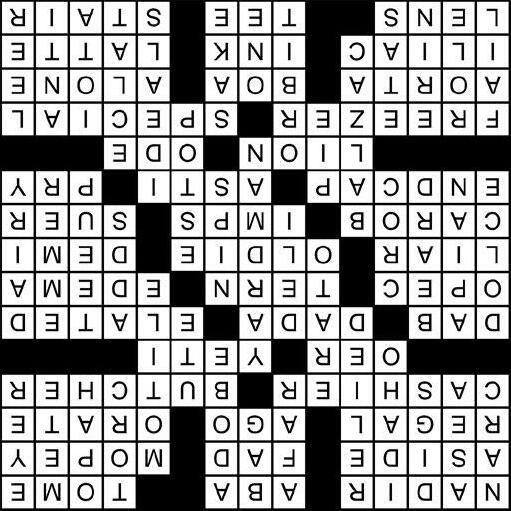







I often think about Edgar Allan Poe. Poe’s pioneering literary accomplishments, his tragic life, and his mysterious death mean that the story of the man behind “The Raven” and “Annabel Lee” never really resolves. Every Halloween season I think about that cat trapped in the wall and the horrors of tuberculosis. Poe was so poor as a young college student that he famously burned his own furniture to stay warm. Poe struggled with poverty and homelessness and alcoholism, and there’s also a theory that Poe was sick with rabies when he lay dying — literally in a Baltimore gutter — at the age of 40.
We’re a few seasons away from the ghoulish charms of October, but Netflix has gone full melancholia with a new dark detective story that’s tied to Poe’s biography and features the first great acting performance of the year. The Pale Blue Eye hit theaters on Dec. 23 before debuting on Netflix on Jan. 6. So, technically, this is a 2022 film. But I’m predicting a slow burn for this one, and I expect The Pale Blue Eye to pick up a lot of fans on the streaming platform in the new year.
The movie is based on Louis Bayard’s 2003 novel of the same name. It’s a murder mystery — Poe invented the detective story — set at West Point where Edgar Allan Poe (Harry Melling) is in his last year at the military academy in 1830, just like the real
Poe. Writer-director Scott Cooper adapts Bayard’s book into a moody, Gothic, occult tale drenched in blue wintertime light. Christian Bale stars as a reluctant detective named Augustus Landor who’s brought to the academy to see a corpse.

Bale and Cooper have previously teamed-up on Out of the Furnace and Hostilities , and Bale is predictably very good here in a brooding, but multifaceted, performance that’s full of nuances viewers will overlook before certain revelations in the third act. Landor’s disheveled demeanor, quiet disposition and reputation as a heavy drinker don’t inspire confidence despite his reputation as a talented case cracker. Landor is world-weary with grief for his missing daughter and he hesitates to investigate the mutilation of a young cadet who committed suicide.
The Pale Blue Eye is a bit grisly with some spooky occult elements, but the real mysteries Landor uncovers are the secrets of the characters in this cast and all the connections between them. And that’s the real strength of this actorly murder tale that includes Toby Jones as a weird West Point doctor and Gillian Anderson as his haughty naughty wife. The most fun casting is Robert Duvall as an occult expert named Jean-Pepe who assists Landor after the detective discovers ritualistic symbols at a murder scene. I love any excuse to bring
in the “occult expert” in a thriller movie, and Duvall doesn’t disappoint.
The best performance in this film about acting performances is entirely locked-up by Melling who is mesmerizing as Poe. Melling’s bony, almost skull-like face is framed in a dramatic tangle of dark curling hair and topped with a black stovepipe hat. He looks like he just stepped out of Victorian-era New England or out of a tintype photograph of Poe himself. Melling and Cooper’s Poe is verbose and articulate, and he’s as obsessed with poetry and the sickly sister of one of his fellow cadets as he is with helping Landor to solve the murder mystery at the academy. Of course, the weird oddball Poe is also one of the suspects.
The Pale Blue Eye is a slow-burn of a film that doesn’t feature an acrobatic camera or action set pieces. This is a movie that takes place in the space between actors, and in between their lines. It’s a movie about characters who are trying to get to know one another in the dark, cold place they’ve all brought their secrets to.
The Pale Blue Eye is currently streaming on Netflix
Benefits: Health Insurance after 60 days of employment. Discounted Downtown Parking. Hotel travel discounts. 401(k) company match. Free meal daily. Discounted Bus Pass.

Relevant Work Experience: 2+ Years
Relevant Industry: Fine Dining Restaurants Hire Range: $18-$24/hr
STEWARD/PREP COOK
Relevant Work Experience: 1+ years
Relevant Industry: Machine operation, Restaurant Kitchen Hire Range: $15-18/hr
Relevant Work Experience: 1+ years
Relevant Industry: Cleaning Hire Rate: $15/hr
COFFEE
Joe Nolan is a critic, columnist and performing singer/ songwriter based in East Nashville. Find out more about his projects at www.joenolan.com.
Relevant Work Experience: 1+ years
Relevant Industry: Coffee Shops, Starbucks Hire Rate: $15/hr + tips
